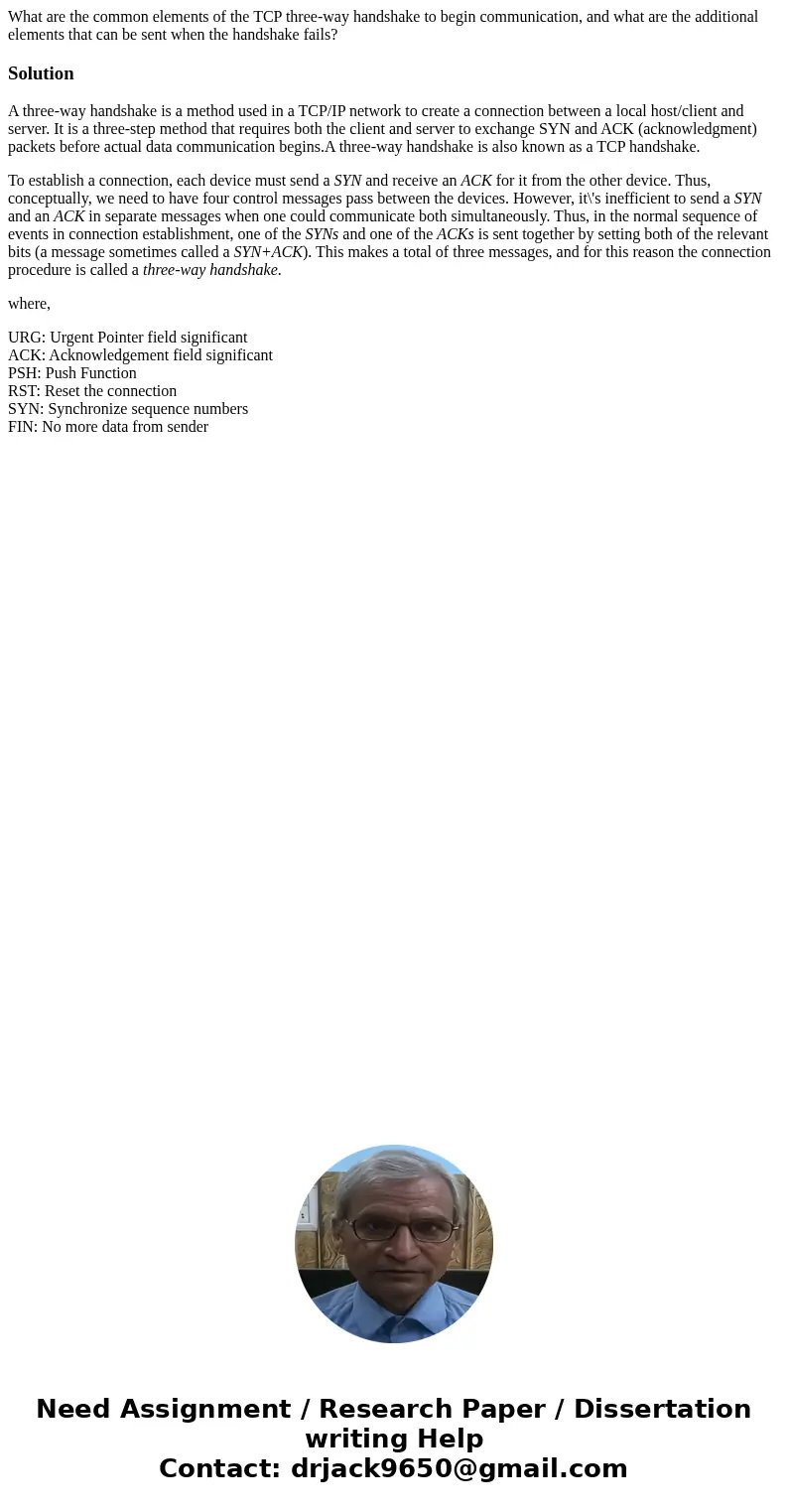What are the common elements of the TCP threeway handshake t
What are the common elements of the TCP three-way handshake to begin communication, and what are the additional elements that can be sent when the handshake fails?
Solution
A three-way handshake is a method used in a TCP/IP network to create a connection between a local host/client and server. It is a three-step method that requires both the client and server to exchange SYN and ACK (acknowledgment) packets before actual data communication begins.A three-way handshake is also known as a TCP handshake.
To establish a connection, each device must send a SYN and receive an ACK for it from the other device. Thus, conceptually, we need to have four control messages pass between the devices. However, it\'s inefficient to send a SYN and an ACK in separate messages when one could communicate both simultaneously. Thus, in the normal sequence of events in connection establishment, one of the SYNs and one of the ACKs is sent together by setting both of the relevant bits (a message sometimes called a SYN+ACK). This makes a total of three messages, and for this reason the connection procedure is called a three-way handshake.
where,
URG: Urgent Pointer field significant
ACK: Acknowledgement field significant
PSH: Push Function
RST: Reset the connection
SYN: Synchronize sequence numbers
FIN: No more data from sender

 Homework Sourse
Homework Sourse